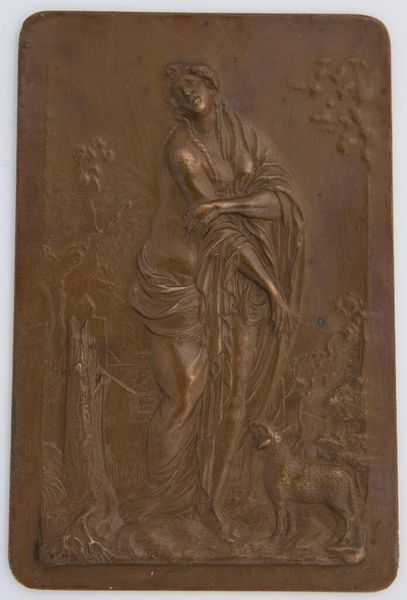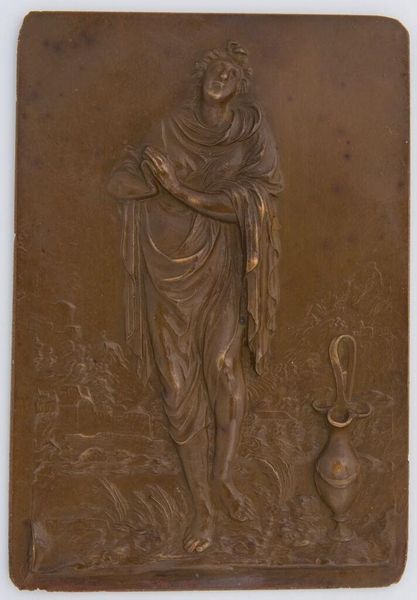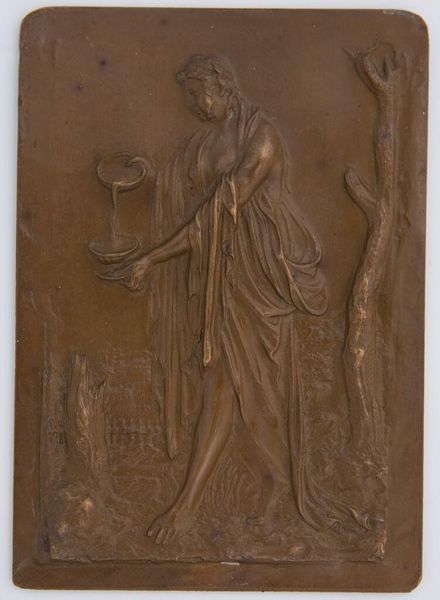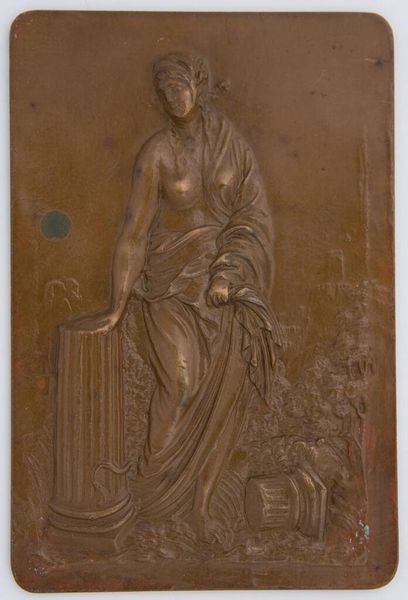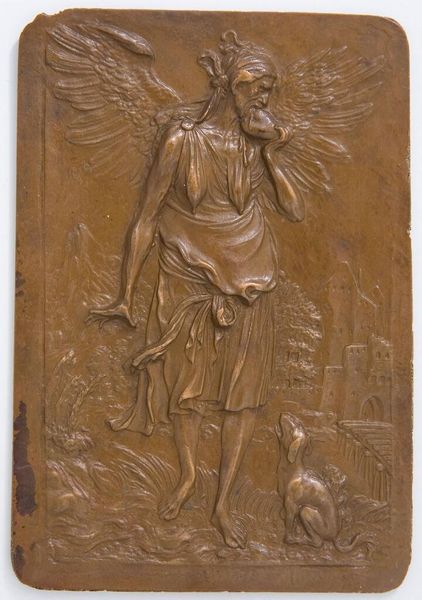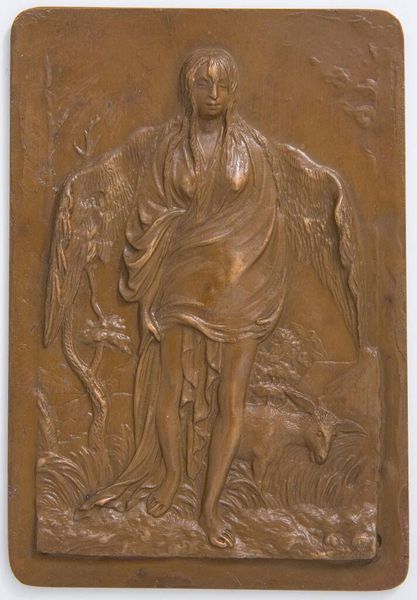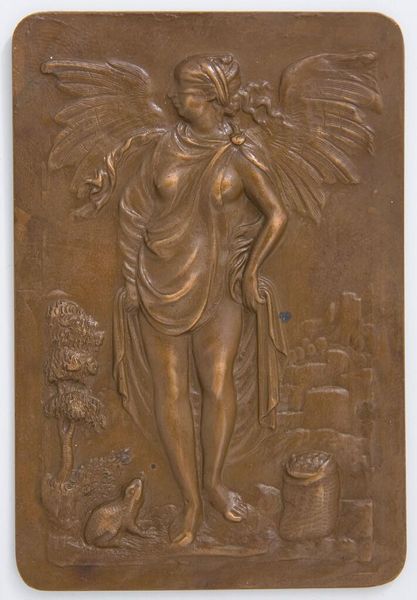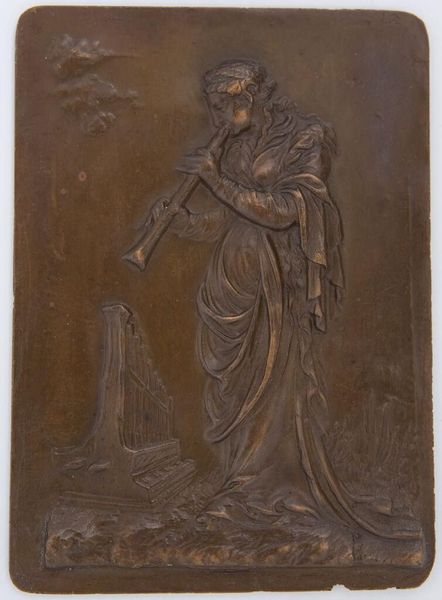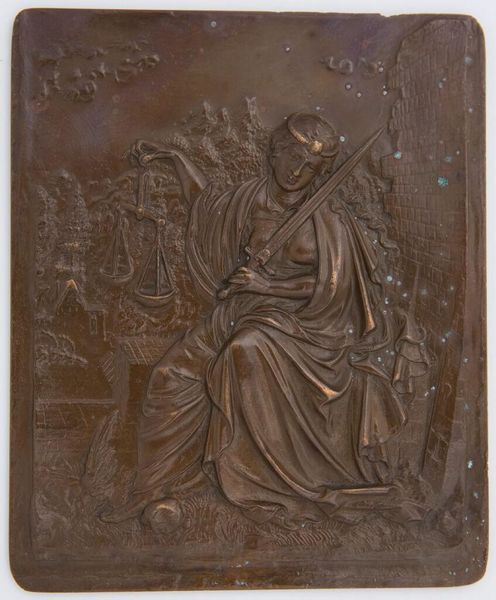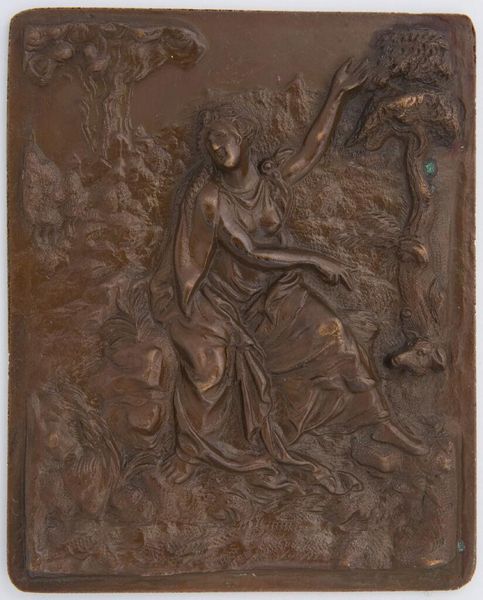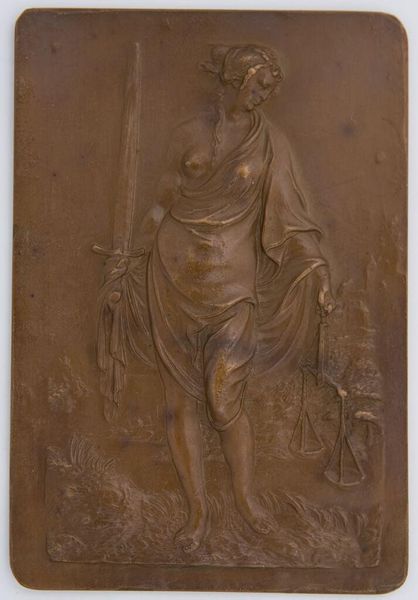
Venus, from the series "The Seven Planetary Gods" early 20th century (original from c.1540)
0:00
0:00
Dimensions: 8.3 x 5.6 cm (3 1/4 x 2 3/16 in.)
Copyright: CC0 1.0
Curator: This small bronze plaque, "Venus," comes from an anonymous series titled "The Seven Planetary Gods," and it resides here at the Harvard Art Museums. It strikes me as delicate yet strangely assertive. Editor: The casting process itself is really interesting. It's not just about rendering an image, but about the whole history of bronze working—mining, smelting, the artisan’s labor. And you can see that history right here, in the slightly uneven surface. Curator: Absolutely. The very creation process, the use of bronze, implies a certain level of patronage and craft expertise. But look closer, and you find a goddess, not cold and aloof, but with a vulnerability in her gaze. Editor: It’s a figure both idealized and strangely intimate. The drapery feels almost tactile, despite being rendered in metal. I find myself wondering about the lost wax casting process—the skill involved in translating ephemeral wax into enduring bronze. Curator: Indeed, and consider the broader context of planetary gods in art—how Venus as a figure of love and beauty has been interpreted through various social lenses. Editor: Thinking about it now, I am intrigued by the tension between the enduring quality of the material and the fleeting nature of beauty itself. Curator: That's a beautiful way to put it. For me, it’s a reminder that art is always both object and idea. Editor: Right, and how those two things intertwine to shape our experience.
Comments
No comments
Be the first to comment and join the conversation on the ultimate creative platform.
